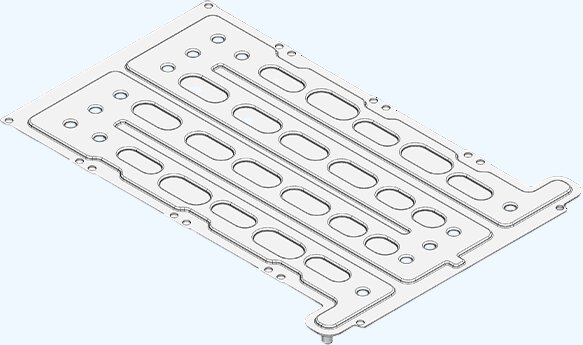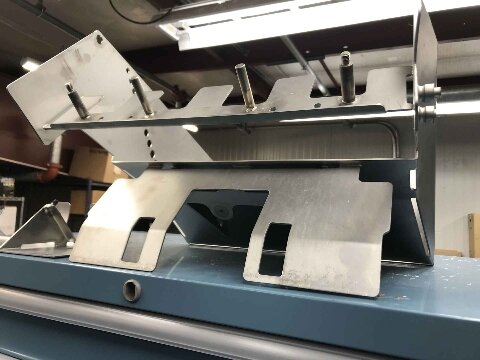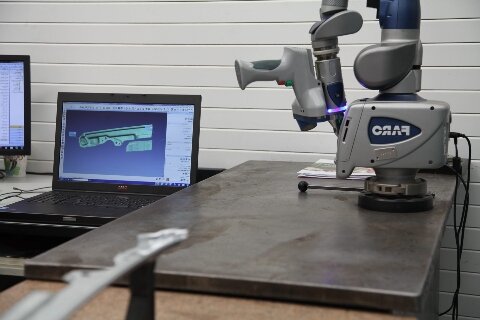La fabrication de pièces métalliques complexes présente des défis constants en termes de qualité, de coûts et de délais. Le moulage sous pression de l'aluminium résout ces problèmes en offrant un processus fiable et efficace qui permet de produire des composants de haute précision à grande échelle. Cette méthode éprouvée offre une valeur exceptionnelle aux ingénieurs et aux fabricants qui recherchent des résultats constants.
Prêt à découvrir comment le moulage sous pression de l'aluminium peut transformer vos opérations de fabrication ? Ce guide couvre tous les aspects, des principes de base aux applications avancées, pour vous aider à prendre des décisions éclairées pour votre prochain projet.
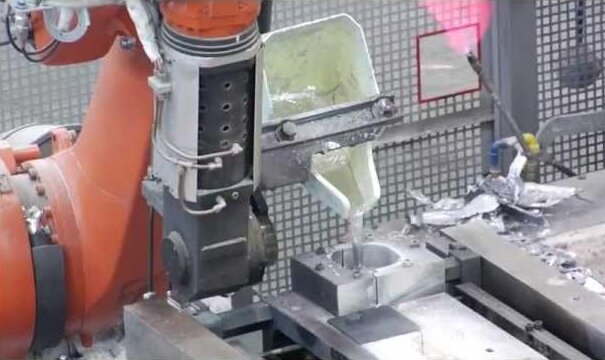
Qu'est-ce que la coulée sous pression d'aluminium ?
Le moulage sous pression de l'aluminium est un procédé de fabrication qui permet de produire des pièces métalliques précises et lisses. Il consiste à injecter de l'aluminium en fusion dans un moule sous haute pression, ce qui permet au métal de prendre la forme du moule.
Ce procédé est réputé pour créer des pièces présentant une excellente résistance à la corrosion et une conductivité élevée. Le moulage sous pression de l'aluminium offre également un rapport résistance/poids élevé, ce qui en fait la solution idéale pour les composants légers mais durables. Il permet une production rapide et est rentable, en particulier pour les gros volumes.
Le processus de moulage sous pression de l'aluminium
Le processus de moulage sous pression suit une séquence précise d'étapes qui transforment l'aluminium brut en composants finis. Détaillons chacune d'entre elles :
Étape 1 : Préparation de la matrice
Le processus commence par la préparation de la matrice, qui se compose de deux moitiés formant le moule de la pièce. Ces matrices sont généralement fabriquées en acier à haute résistance pour supporter la pression et la température de l'aluminium en fusion.
Étape 2 : Fusion et injection de l'aluminium
Une fois la matrice prête, l'aluminium est fondu dans un four. L'aluminium fondu est ensuite injecté à haute pression dans la matrice.
Étape 3 : Refroidissement et solidification
Après l'injection, l'aluminium en fusion refroidit et se solidifie à l'intérieur du moule. Le temps de refroidissement dépend de l'épaisseur de la pièce, mais il est généralement rapide grâce au système de refroidissement du moule.
Étape 4 : Éjection de la coulée
Une fois la pièce solidifiée, les deux moitiés de la matrice sont séparées et la pièce est éjectée. Cette opération est effectuée avec précaution afin d'éviter d'endommager le composant nouvellement formé.
Étape 5 : Opérations post-coulée (Ébavurage, Traitement de surface)
Après l'éjection, la pièce peut nécessiter des étapes de finition supplémentaires. Il peut s'agir d'éliminer tout excès de matière, appelé "bavure", qui s'est formé autour des bords de la pièce.
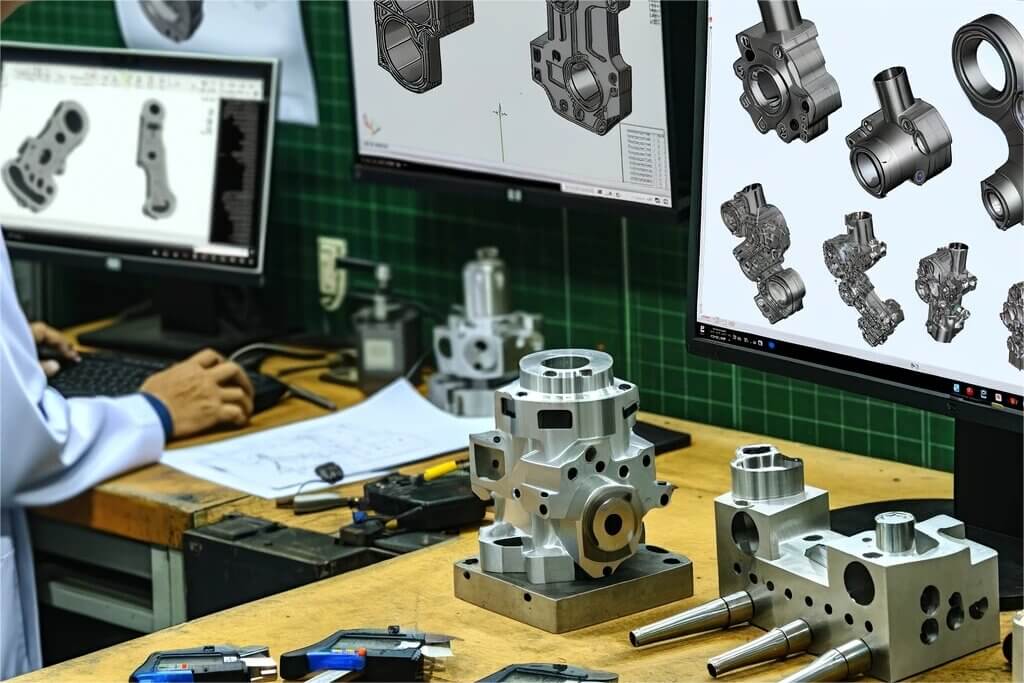
Types de moulage sous pression de l'aluminium
Le moulage sous pression de l'aluminium se décline en plusieurs variantes, chacune d'entre elles étant conçue pour répondre à des besoins de fabrication spécifiques. Ces méthodes diffèrent par la manière dont l'aluminium en fusion est introduit dans le moule et par les conditions dans lesquelles il se solidifie.
Moulage sous pression
Le HPDC consiste à injecter de l'aluminium en fusion dans un moule en acier sous une pression extrême, généralement comprise entre 10 000 et 25 400 psi. Cette méthode est idéale pour produire des formes complexes avec des tolérances serrées et des finitions de surface lisses.
Moulage sous pression
Le LPDC utilise une basse pression contrôlée pour remplir la cavité du moule avec de l'aluminium en fusion, ce qui garantit un remplissage constant et précis. Cette méthode minimise la porosité et est particulièrement adaptée à la création de composants symétriques tels que les roues ou les pièces structurelles.
Moulage sous vide
Le moulage sous vide applique un vide à la cavité du moule, tirant l'aluminium fondu à l'intérieur du moule. Ce processus réduit l'emprisonnement de l'air et la porosité, ce qui permet d'obtenir des pièces moulées plus denses et de meilleure qualité.
Moulage sous pression
Le moulage sous pression combine des éléments de forgeage et de moulage en appliquant une pression élevée pendant la solidification. Cette méthode permet d'éliminer la porosité et d'améliorer les propriétés mécaniques, produisant ainsi des pièces d'une résistance et d'une durabilité exceptionnelles.
Avantages de la coulée sous pression d'aluminium
Le moulage sous pression de l'aluminium offre plusieurs avantages qui en font un choix populaire pour les fabricants. En voici les principaux :
Produits légers et solides
Le moulage sous pression de l'aluminium permet de créer des pièces à la fois légères et solides. Les propriétés naturelles de l'aluminium le rendent idéal pour des applications dans des secteurs tels que l'automobile et l'aérospatiale, où la réduction du poids est cruciale pour améliorer les performances.
Rapport coût-efficacité
Le moulage sous pression de l'aluminium est une option rentable pour la production à grande échelle. Si les coûts d'outillage peuvent être élevés au départ, le processus efficace permet une production rapide et en grande quantité, ce qui réduit le prix unitaire.
Précision dimensionnelle supérieure
Le processus d'injection à haute pression garantit une excellente précision. Le moulage sous pression de l'aluminium produit des pièces aux tolérances serrées et aux dimensions constantes, ce qui réduit la nécessité d'un usinage supplémentaire.
Dissipation thermique améliorée
L'aluminium possède une excellente conductivité thermique, ce qui le rend idéal pour les applications sensibles à la chaleur. Les pièces moulées sous pression dissipent efficacement la chaleur, ce qui est essentiel pour les industries telles que l'électronique et l'automobile.
Géométries complexes et dessins compliqués
Le moulage sous pression de l'aluminium permet de produire des pièces aux formes et aux caractéristiques complexes. Ce procédé permet de réaliser des dessins détaillés, des parois minces et des géométries complexes qui pourraient s'avérer difficiles à réaliser avec d'autres méthodes de fabrication.
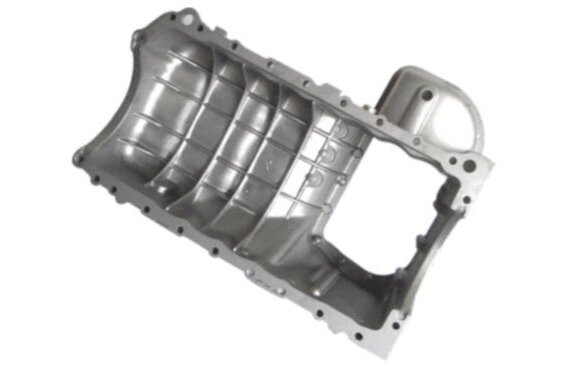
Les défis de la coulée sous pression d'aluminium
Si le moulage sous pression de l'aluminium offre de nombreux avantages, il présente également plusieurs défis que les fabricants doivent relever pour garantir une production de haute qualité. Voici quelques-uns des problèmes les plus courants rencontrés au cours du processus :
Questions relatives à la porosité
La porosité se produit lorsque des gaz, tels que l'air ou l'hydrogène, sont piégés dans l'aluminium fondu pendant la coulée. Il en résulte des vides internes ou des défauts de surface qui peuvent réduire la résistance mécanique, l'étanchéité à la pression et la qualité.
Les solutions comprennent l'optimisation de la conception des moules, l'amélioration des systèmes de ventilation et le raffinement de l'alliage pour réduire l'emprisonnement des gaz.
Défauts de surface et inclusions
Les défauts de surface tels que les cloques, les inclusions et les finitions rugueuses proviennent souvent d'impuretés dans l'aluminium fondu ou d'un mauvais entretien du moule. Ces défauts affaiblissent le moulage et peuvent affecter sa qualité esthétique.
Il est essentiel de bien nettoyer les moules, de traiter l'alliage correctement et de maintenir des températures de moule constantes pour les prévenir.
Craquage à chaud
La fissuration à chaud (ou déchirure à chaud) se produit au cours des dernières étapes de la solidification, lorsque la pièce moulée est encore semi-solide. Elle est due à une contraction thermique inégale ou à une concentration de contraintes aux points faibles de la pièce moulée.
Pour éviter la fissuration à chaud, les fabricants doivent veiller à ce que l'épaisseur de la paroi soit uniforme, éviter les angles vifs dans la conception et contrôler la vitesse de refroidissement pendant la solidification.
Quelle est la meilleure fonte pour l'aluminium ?
Le meilleur alliage d'aluminium pour le moulage sous pression dépend de l'application spécifique. Cependant, l'A380 est l'alliage le plus couramment utilisé en raison de son excellent équilibre entre la coulabilité, la durabilité et la rentabilité. Il offre une bonne fluidité, une bonne conductivité thermique et une bonne résistance à la fissuration à chaud, ce qui le rend idéal pour les conceptions complexes et les applications à parois minces.
Parmi les autres alliages notables, on peut citer
- A360: Connu pour sa résistance supérieure à la corrosion et son étanchéité à la pression, il convient pour les températures élevées ou les environnements difficiles.
- A383 (ADC12): Offre de meilleures caractéristiques de remplissage à des températures plus basses, ce qui est idéal pour les formes complexes et les dessins détaillés.
- A356: Populaire dans les applications aérospatiales et industrielles pour sa soudabilité et sa durabilité.
Applications courantes de la coulée sous pression d'aluminium
Le moulage sous pression de l'aluminium est largement utilisé dans diverses industries, car il permet de produire des composants légers, durables et complexes avec une grande précision. Voici quelques-unes de ses applications les plus courantes :
Industrie automobile:
- Blocs moteurs
- Boîtiers de transmission
- Roues
- Les composants structuraux
Aérospatiale et aviation :
- Pièces de moteur
- Structures d'aile
- Train d'atterrissage
Electronique grand public :
- Boîtiers de smartphones
- Châssis de l'ordinateur portable
- Dissipateurs de chaleur
- Boîtiers de caméra
Equipement industriel:
- Boîtiers
- Supports
- Engrenages
Équipement médical:
- Pièces pour scanner IRM
- Boîtiers d'appareils à ultrasons
- Outils chirurgicaux
- Composants de la pompe à oxygène portable
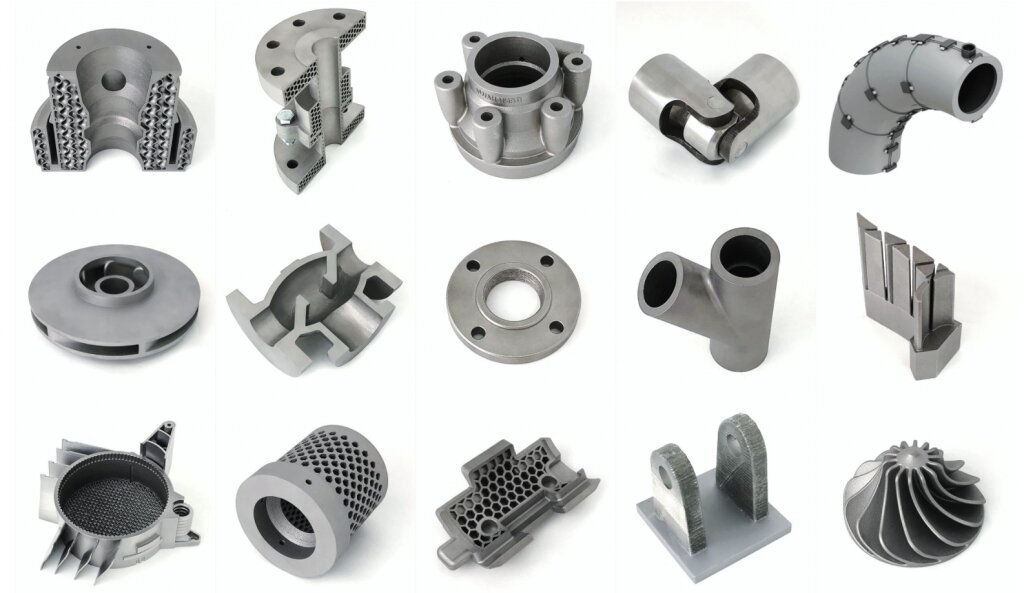
Alternatives au moulage sous pression - moulage en sable et en cire perdue
Lorsque le moulage sous pression n'est pas optimal, le moulage en sable et le moulage à la cire perdue apparaissent comme des alternatives viables. Chaque méthode offre des avantages uniques et convient à des applications spécifiques.
Moulage en sable
Le moulage au sable consiste à créer un moule à partir de sable pour y couler du métal en fusion. Ce procédé est très polyvalent et rentable pour les volumes de production faibles à moyens.
Avantages du moulage au sable :
- Faibles coûts d'outillage: Idéal pour les prototypes ou les petites séries grâce à des moules peu coûteux.
- Polyvalence des matériaux: Fonctionne avec presque tous les alliages ferreux ou non ferreux.
- Flexibilité de la taille: Peut produire des pièces allant de quelques onces à plus de 200 tonnes.
Moulage d'investissement
Le moulage à la cire perdue utilise un modèle en cire recouvert de céramique pour créer un moule. La cire est fondue et le métal en fusion est coulé dans la coquille en céramique pour obtenir des composants de haute précision.
Avantages de la coulée à la cire perdue :
- Tolérances serrées: Produit des pièces avec une excellente précision dimensionnelle et des besoins d'usinage minimaux.
- Géométries complexes: Capable de créer des dessins complexes sans dessiner d'angles.
- Finition de surface supérieure: Offre des finitions plus lisses que le moulage en sable ou sous pression.
Conclusion
Le moulage sous pression de l'aluminium offre une solution polyvalente et rentable pour la fabrication de pièces de haute qualité dans divers secteurs. Parmi ses avantages, citons la légèreté, la précision dimensionnelle supérieure et la capacité à produire des géométries complexes.
Qu'il s'agisse de composants automobiles, de pièces pour l'aérospatiale ou de boîtiers pour l'électronique grand public, le moulage sous pression de l'aluminium offre les performances et la précision requises pour les applications exigeantes.
Prêt à découvrir comment le moulage sous pression de l'aluminium peut profiter à votre prochain projet ? Contactez-nous dès aujourd'hui pour une consultation et un devis gratuits.
Hey, je suis Kevin Lee

Au cours des dix dernières années, j'ai été immergé dans diverses formes de fabrication de tôles, partageant ici des idées intéressantes tirées de mes expériences dans divers ateliers.
Prendre contact

Kevin Lee
J'ai plus de dix ans d'expérience professionnelle dans la fabrication de tôles, avec une spécialisation dans la découpe au laser, le pliage, le soudage et les techniques de traitement de surface. En tant que directeur technique chez Shengen, je m'engage à résoudre des problèmes de fabrication complexes et à favoriser l'innovation et la qualité dans chaque projet.

